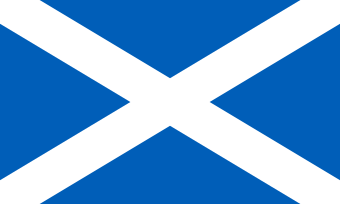ABC Notation
- Details
- Hits: 37
ABC notation is a shorthand musical notation for computers using letter notations. It was originally developed in the late 1990s for French bagpipes but gradually expanded to music generally. The files are simple text files that are read by software and either played on the computer speaker or rendered into sheet music. There are similarities to LaTeX. From Andrew Lenz's website, there is the abc notation for a tune:
X:1
T:The Brown Haired Maiden
N:Very common tune.
Z:Transcribed Sept. 28, 2003 by Andrew T. Lenz, Jr.
C:Traditional, Arr. PM Jay Salter
R:March
M:2/4
L:1/8
Q:1/4=80
K:HP
Kilt and Scottish Attire
- Details
- Hits: 2590
A kilt is a garment similar to a skirt worn by men. It was originally a wrap-around full-length garment (belted plaid) that could be draped over the shoulder and head - something like the garment Mel Gibson wore in the field in the movie Braveheart, where he played the role of Sir William Wallace fighting against Edward I (Edward Longshanks) and his army. This was the "great kilt". A walking kilt or small kilt was invented in the 1720s which was less unwieldy as the great kilt. The small kilt was quickly adopted in Scotland, although here is evidence that this kilt was already in used before the 1720s. A kilt usually has a tartan, although Irish pipe bands often wear a kilt in a solid colour - typically saffron or green. The amount of material in a kilt (wool) can range from heavy (18-22 ounces) down to light (10-11 ounces). A full kilt has 8 yards of fabric, although for those who are not girth-impaired, it can range up to 9 yards.
St. Andrew's Day
- Details
- Hits: 1077




St. Andrew's Day or the "Feast of Saint Andrew" or "Andermas" is celebrated on 30 November each year. It is Scotland's official national day.
St. Andrew was a disciple in the New Testament and brother of Apostle Peter. St. Andrew is the patron saint of Cyprus, Scotland, Greece, Romania, Russia, Ukraine, the Ecumenical Patriarchate of Constantinople (Eastern Orthodoxy), San Andres Island in Columbia, Barbados and Tenerife. St. Andrew's day is observed by the Eastern Orthodox Church, Roman Catholic Church, Anglicans and Presbyterians. It marks the beginning of Advent.
St. Andrew's Day may have its origins in the Samhain, a Gaelic festival marking the end of the harvest season and the start of winter or the darker half of the year (there may be ties to Halloween, the Day of the Dead, Bonfire Night and perhaps even Thanksgiving). For the Scots there are three winter festivals of significance: St. Andrew's Day, Hogmanay and Burns Night.
There is a tradition of premonitions on this day for the Scots. In parts of Eastern Europe it is a time for magic to reveal a young woman's future and her husband. There is also a belief that this is the most popular time for vampire activity. There is also a tradition of invoking Saint Andrew to ward off wolves, but if the wolves speak to a human, that human may die soon.
Remembrance Day
- Details
- Hits: 1284

Remembrance Day (or Armistice Day) is typically a holiday on 11 November each year in Canada. Originally it was meant to commemorate the Armistice that ended the First World War (sometimes called "the Great War"). There have been many wars since, including World War 2. The day has come to commemorate all those who have made sacrifices in war, peacekeeping, in peace-time and on "the home front". Canada's Remembrance Day is similar to that of France and Belgium in that it is a national holiday. In the United Kingdom, Remembrance Sunday is the day of commemoration, rather than 11 November. In Australia and New Zealand the poppy is worn on ANZAC day.
Bonfire Night (Guy Fawkes)
- Details
- Hits: 1839

| Don't you Remember, The Fifth of November, 'Twas Gunpowder Treason Day, I let off my gun, And made'em all run. And Stole all their Bonfire away. (1742) |
Fawkes Night or Bonfire Night is a commemoration of Guy (aka Guido) Fawkes and an event called the "Gunpowder Plot". The event is one of three main events celebrated amongst the Scottish diaspora along with St. Andrews Day (30 November) and Burn's Night (25 January). It is also celebrated throughout the United Kingdom and is truly a British celebration.
The Plot occurred in 1605 in London, England and was an attempted conspiracy to assassinate King James I (King James VI of Scotland - remember the two crowns were united by marriage and this is the start of the Stuart Dynasty, replacing the Tudors) by a group of English Catholics who wanted to restore the Catholic monarchy - and with it make the King rule by absolutism (or by divine right).
Page 1 of 2

